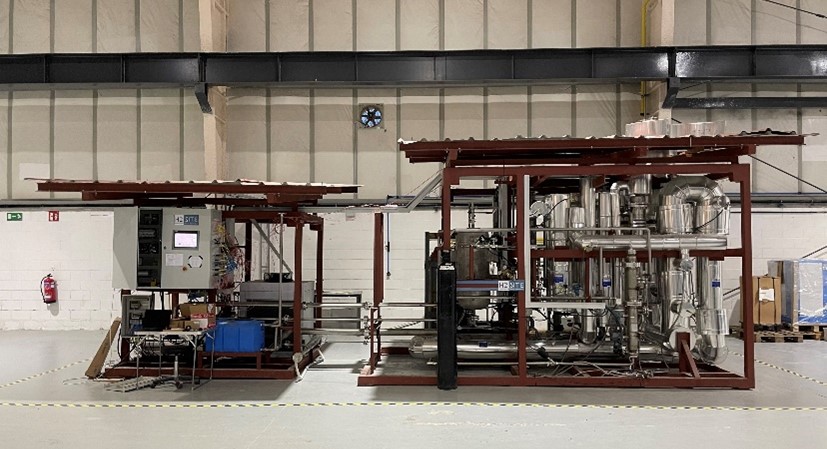H₂ Case demonstration – Demo plant in Spain
- 19/02/2024
H2SITE has finalised the commissioning of the new reactor for the natural gas reformer. This new reactant feeding to the reactor has been modified to assure better performance (higher H₂ production and longer membrane stability). These modifications have been validated in an 8 hours automatic test without membranes. Up to now, a total of 250 hours of H₂ production have been achieved. The system now works in a fully automated mode, which means that the demonstrator can be operated with one single button. Once it is ready, the operator can start with the H₂ production phase. Besides, whenever is required to switch off the demonstrator, it is possible to singlepress the button that ends the H₂ production phase. All these tasks can be performed either from the system screen (located next to the demonstrator) or remote-controlled from another place.
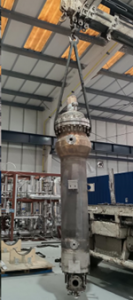
Figure 1: The new reactor
Next steps include the membrane integration to perform an 8 hours FAT test in the H2SITE facilities. After that, the reactor will be ready to obtain the CE-marking (which is only lasting for the last functionality test) and can be relocated from H2SITE to CNH2 with all required documentation. As soon as it gets here, commissioning at the new location will proceed until the start of the testing campaign, targeting more than 1000 hours of H₂ production.
The tasks to be carried out by CNH2 consist of preparing the facilities to host the MASR (membrane assisted steam reforming), in order to run it in safe conditions. Preliminary works completed, such as the installation of a hydrogen compressor, civil works and the improvement of safety measures. Before its arrival, the main ongoing work is the completion of the natural gas line to supply the MASR. Natural gas serves a double purpose, a part is burned to generate steam, to mix it with natural gas provided by the same line in presence of catalyst. This way, the reforming reaction occurs, producing hydrogen. To feed the reactor, natural gas from the grid must be provided at high pressure, which is increased by a compressor.
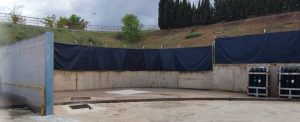
Figure 2: The future location of the reforming with a protection wall and fire-proof tarps
The next step is the commissioning of the natural gas compressor to ensure that it will work as expected. This is a critical point of the system, because in case of failure it would not only avoid the MASR to run, but it would also be dangerous, due to the risk of gas leak, fire or explosion. At this point, the commissioning is under planification together with the company contracted to do it.
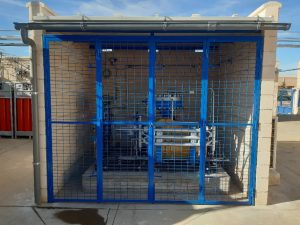
Figure 3: The hydrogen compressor placed in its location at CNH2
The final stage involves the connection and completion of the natural gas line, once the MASR arrives. After the completion, the line will be inspected and legalized to enable natural gas supply. Once the installation and ommissioning of the reforming are completed, the operation phase will start and the system will commence for an extended duration, in order to evaluate the behavior, efficiency and reliability of catalyst, membranes and the overall system.
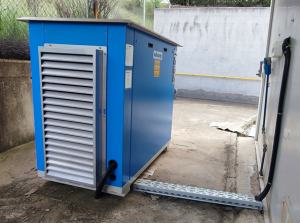
Figure 4: The natural gas compressor.
